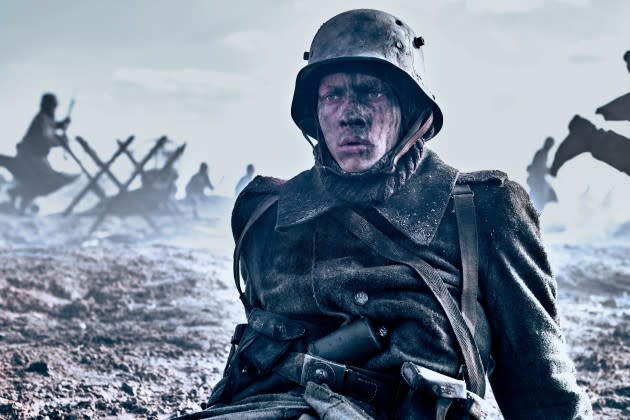‘All Quiet on the Western Front’ DP James Friend on Using Wide Format to Capture the Hell of War
- Oops!Something went wrong.Please try again later.
- Oops!Something went wrong.Please try again later.
- Oops!Something went wrong.Please try again later.
- Oops!Something went wrong.Please try again later.

Cinematographer James Friend was a fan of the 1930 version of “All Quiet on the Western Front,” so when director Edward Berger called on him to work on a new adaptation of the Erich Maria Remarque classic, he deliberately did not go back to watch the film, but he did read the book.
“We were adapting the novel, not reimagining the movie,” Friend says, and that was how they would keep the vision fresh.
More from Variety
'All Quiet on the Western Front' Director Edward Berger: 'I Could Never Say I'm Proud to Be German'
In 'All Quiet on the Western Front' and 'Fabelmans,' Screenwriting Teamwork Makes the Scene Work
One of the first things Friend did, in a move influenced by Roger Deakins, was to find naturalism in his shots. That meant “testing the actors and their skin tones, in their costumes and posing against an environment because we knew that fundamentally we were going to be working with daylight or nighttime.”
Friend says that choice became the foundation with which to operate.
Berger’s adaptation is gritty and harrowing as it follows Paul, played by Felix Kammerer, a young German soldier who enlists in the army and experiences the horrifying reality of World War I.
“That grit comes from using a wider lens and following Felix on his shoulder and this visceral nature you get when using that lens,” Friend says.
The decision was to use large-format cameras, “traditionally reserved for ‘Lawrence of Arabia’ [epics], and those [cameras] punctuate portraiture and close-ups. They’re normally considered tools for shooting vistas and big mountain ranges.”
Not only did that help Friend bring those moments to life when he was running down a trench for a scene, it also punched up the closeups: “It became apparent during the dinner scene between the general and his second in command. When we moved the camera into the actor’s path, you’ve got this Imax-like quality field of view and resolution,” Friend says.
Best of Variety
Sign up for Variety’s Newsletter. For the latest news, follow us on Facebook, Twitter, and Instagram.
